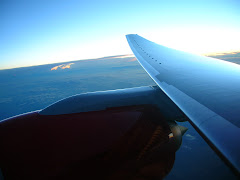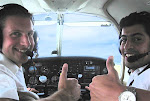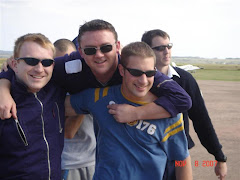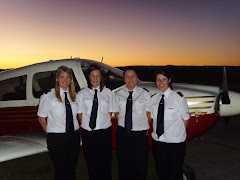All too rarely, airline attendants make an effort to make the in-flight "safety lecture" and announcements a bit more entertaining. Here are some real examples that have been heard or reported:
On landing, the stewardess said, "Please be sure to take all of your belongings. If you're going to leave anything, please make sure it's something we'd like to have."
"There may be 50 ways to leave your lover, but there are only 4 ways out of this airplane"
"Thank you for flying Delta Business Express. We hope you enjoyed giving us the business as much as we enjoyed taking you for a ride."
As the plane landed and was coming to a stop at Ronald Reagan, a lone voice came over the loudspeaker: "Whoa, big fella. WHOA!"
"In the event of a sudden loss of cabin pressure , masks will descend from the ceiling. Stop screaming, grab the mask, and pull it over yourface. If you have a small child traveling with you, secure your mask before assisting with theirs. If you are traveling with more than one small child, pick your favorite.
"Weather at our destination is 50 degrees with some broken clouds,but we'll try to have them fixed before we arrive. Thank you, and remember, nobody loves you, or your money, more than Southwest Airlines.
After a real crusher of a landing in Phoenix, the attendant came on with, "Ladies and Gentlemen, please remain in your seats until Capt. Crash and the Crew have brought the aircraft to a screeching halt against the gate. And, once the tire smoke has cleared and the warning bells are silenced, we'll open the door and you can pick your way through the wreckage to the terminal.
Part of a flight attendant's arrival announcement: "We'd like to thank you folks for flying with us today. And, the next time you get the insane urge to go blasting through the skies in a pressurized metal tube, we hope you'll think of US Airways.
Heard on a Southwest Airline flight. "Ladies and gentlemen, if you wish to smoke, the smoking section on this airplane is on the wing and if you can light 'em, you can smoke 'em.
"A plane was taking off from Kennedy Airport. After it reached a comfortable cruising altitude, the captain made an announcement over the intercom, "Ladies and gentlemen, this is your captain speaking. Welcome to Flight Number 293, nonstop from New York to Los Angeles. The weather ahead is good and, therefore, we should have a smooth and uneventful flight. Now sit back and relax.. . OH, MY GOD!" Silence followed, and after a few minutes, the captain came back on the intercom and said, "Ladies and Gentlemen, I am so sorry if I scared you earlier. While I was talking to you, the flight attendant accidentally spilled a cup of hot coffee in my lap. You should see the front of my pants!" A passenger in Coach yelled, "That's nothing. You should see the back of mine!
















